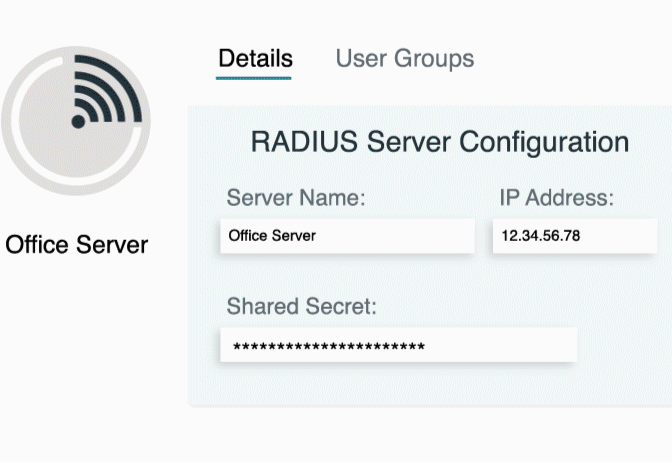Updated on March 7, 2025
Asymmetric routing can boost flexibility and efficiency but also poses challenges for network performance and security.
This blog will explore the ins and outs of asymmetric routing, its causes, implications, and strategies to mitigate challenges.
What Is Asymmetric Routing?
Asymmetric routing happens when network traffic takes different paths for outgoing and incoming packets. In contrast, symmetric routing ensures that request and response packets travel the same path. Asymmetric routing often results from network design or optimization but can complicate monitoring, security, and troubleshooting.
For instance, in load-balanced or multi-homed networks, incoming traffic might come through one Internet Service Provider (ISP) while outgoing traffic leaves through another. This creates an asymmetric flow, which can be challenging to manage for systems like stateful firewalls or intrusion detection tools.
Definition and Core Concepts
Asymmetric Routing Explained
Asymmetric routing occurs primarily due to dynamic routing protocols (e.g., Border Gateway Protocol (BGP), Open Shortest Path First (OSPF)) or specific configurations such as policy-based routing. These protocols choose the “best” return path based on metrics like latency or bandwidth availability instead of ensuring symmetrical flow.
Symmetric vs. Asymmetric Routing
- Symmetric Routing: Traffic leaves and returns via the same path. Often preferred in simpler network environments due to easier packet tracking.
- Asymmetric Routing: Traffic uses varying outbound and inbound paths. Common in complex networks leveraging multiple ISPs, load balancers, or dynamic routing protocols.
How Asymmetric Routing Works
- Packet Transmission: A client device sends a request (e.g., to a website or server), initiating traffic over a defined path.
- Routing Decisions: Dynamic routing protocols select a return path dynamically based on real-time conditions or configurations within the network.
- Packet Reception: The return packet travels through a different route, which can introduce challenges for stateful hardware like firewalls or intrusion detection systems (IDS).
Causes of Asymmetric Routing
Multi-Homed Networks
Organizations using multiple ISPs or gateways often face issues with asymmetric routing. This happens when different ISPs use their own routing policies, leading to different paths for incoming and outgoing traffic.
Dynamic Routing Protocols
Protocols like BGP, OSPF, and EIGRP automatically select the “best” route for return traffic. They make these decisions based on factors like link conditions, bandwidth costs, and administrative settings, which can result in asymmetric paths.
Load Balancing
Load balancers split traffic across multiple network links or routers to improve performance. This can cause request and response packets to take different routes.
Policy-Based Routing (PBR)
Policy-based routing allows traffic to be directed based on specific conditions, like source or destination IP addresses or type of service (ToS). These custom rules often intentionally create asymmetry in traffic flows.
NAT Challenges
Using multiple NAT devices can lead to issues where traffic leaves through one device but returns through another, causing asymmetric routing problems and potential NAT conflicts.
Implications of Asymmetric Routing
Network Performance
- Latency Variations: Different network paths may introduce unpredictable latency, affecting real-time applications like VoIP or video conferencing.
- Unoptimized Paths: Packets may not always follow the most efficient route from source to destination, potentially increasing transmission time.
Firewall and Security Issues
- Stateful Firewalls: Firewalls relying on session tracking may drop packets if the outbound request did not originate on the same path as the return packet.
- Intrusion Detection/Prevention Systems (IDS/IPS): These systems may fail to accurately track sessions, leading to missed detections or false positives.
Troubleshooting Complexity
Diagnosing issues in asymmetric routing environments requires sophisticated monitoring tools and advanced expertise. IT administrators often resort to packet captures and deep path analysis to locate inconsistencies.
Example Scenario
Imagine an organization hosting a web application across two data centers connected via Multi-Protocol Label Switching (MPLS). User requests enter Data Center A but return through Data Center B due to dynamic routing. Stateful firewalls in both locations may drop these packets, breaking the session delivery.
Mitigating Challenges in Asymmetric Routing
While asymmetric routing is not inherently problematic, it can cause disruptions without proper strategies. Here are some key mitigation techniques:
Enable Stateful Firewall Synchronization
Stateful firewalls should be configured to synchronize session state information. This ensures that packets arriving on a different path can still be validated against the original outbound request.
Implement Route Tagging and Path Manipulation
Using BGP communities, Multi-Exit Discriminator (MED), or local preference settings can help influence path selection and allow greater control over return routes.
Utilize Equal-Cost Multi-Path (ECMP) Routing
ECMP distributes traffic across multiple paths that appear equally favorable, reducing the likelihood of latency mismatches and improving consistency in asymmetric routing environments.
Monitor and Optimize Network Paths
Leverage tools like traceroute, path analysis tools, and NetFlow to identify and optimize asymmetric paths.
Configure Policy-Based Decisions
Ensure policy-based routing (PBR) rules and firewall configurations are aligned to handle asymmetric traffic without packet loss or session drops.
Glossary of Terms
- Asymmetric Routing: A network behavior where inbound and outbound packets traverse different paths, often due to dynamic routing policies or load balancing.
- Symmetric Routing: A scenario where outbound and inbound traffic follow the same network path.
- Stateful Firewall: A firewall that tracks the state of active sessions and ensures only expected return traffic is allowed.
- Equal-Cost Multi-Path (ECMP): A routing protocol feature that enables traffic distribution across multiple paths of equal cost.
- BGP: Border Gateway Protocol, a dynamic routing protocol used for inter-domain routing across multiple networks.
- Policy-Based Routing (PBR): A routing configuration that directs traffic based on attributes such as source IP, destination, or application type, rather than relying solely on static routes.
- NAT: Network Address Translation, a process that translates private IP addresses into public ones for communication over the Internet.
- NetFlow: A network protocol used to collect and analyze traffic data in real-time for monitoring and security purposes.






